Jeep Cherokee (XJ): Transmission oil coolers. Coolant reserve tank. Water pump
WATER-TO-OIL COOLER The internal transmission oil cooler located within
the radiator is not serviceable. If it requires service,
the radiator must be replaced.
Once the repaired or replacement radiator has been
installed, fill the cooling system and inspect for leaks.
Refer to the Refilling Cooling System and Testing
Cooling System For Leaks sections in this group. If
the transmission operates properly after repairing the
leak, drain the transmission and remove the transmission
oil pan. Inspect for sludge and/or rust. Inspect for
a dirty or plugged inlet filter. If none of these conditions
are found, the transmission and torque convertor
may not require reconditioning. Refer to Group 21 for
automatic transmission servicing. AIR-TO-OIL COOLER REMOVAL (1) Remove the grill mounting screws and remove
the grill. Refer to Group 23, Body for procedures.
(2) Place a drain pan below the transmission oil
cooler.
(3) Remove the two constant tension clamps at oil
cooler inlet and outlet tubes.
(4) Remove the two oil cooler mounting bolts (Fig.
22).
(5) Remove the oil cooler from vehicle. INSTALLATION (1) Position and secure oil cooler to vehicle.
Tighten mounting bolts to 8 N·m (72 in. lbs.) torque.
(2) Secure inlet and outlet tubes with constant
tension clamps.
Install the grill.
(3) Start engine and check transmission fluid level.
Add fluid if necessary. REMOVAL (1) Remove the tube clamp at the tank and remove
tube.
1 - AIR CONDITIONING CONDENSER (2) Remove the tank mounting bolts and remove
tank (Fig. 23) (Fig. 24).
1 - COOLANT RESERVE/OVERFLOW TANK
1 - CLAMP INSTALLATION (1) Position tank and tighten to 2 N·m (17 in. lbs.)
torque.
(2) Position tube and secure clamp. CAUTION: If the water pump is replaced because of
mechanical damage, the fan blades and viscous fan
drive should also be inspected. These components
could have been damaged due to excessive vibration.
The water pump can be removed without discharging
the air conditioning system (if equipped).
CAUTION: All engines have a reverse (counterclockwise)
rotating water pump. The letter R is
stamped into the back of the water pump impeller
(Fig. 25) to identify. Engines from previous model
years, depending upon application, may be
equipped with a forward (clockwise) rotating water
pump. Installation of the wrong water pump will
cause engine over heating.
1 - R STAMPED INTO IMPELLER The water pump impeller is pressed on the rear of
the pump shaft and bearing assembly. The water
pump is serviced only as a complete assembly.
WARNING: DO NOT REMOVE THE BLOCK DRAIN
PLUG(S) OR LOOSEN RADIATOR DRAINCOCK
WITH THE SYSTEM HOT AND UNDER PRESSURE.
SERIOUS BURNS FROM COOLANT CAN OCCUR.
DO NOT WASTE reusable coolant. If the solution
is clean, drain coolant into a clean container for
reuse. REMOVAL-2.5L ENGINE (LHD/RHD) (1) Disconnect battery negative cable.
(2) Drain cooling system. Refer to Cooling System-
Draining and Filling in this group.
(3) Remove upper radiator hose.
(4) Loosen (but do not remove at this time) the
four fan hub-to-water pump pulley mounting nuts
(Fig. 26).
(5) Remove accessory drive belt. (Refer to Accessory
Drive Belt, Removal and Installation in this
group)
(6) Disconnect electric cooling fan connector (if
equipped).
(7) Unbolt fan shroud.
(8) Remove the four fan hub-to-water pump pulley
nuts and remove fan and shroud together. CAUTION: After removing fan blade/viscous fan
drive assembly, do not place thermal viscous fan
drive in horizontal position. If stored horizontally,
silicone fluid in viscous fan drive could drain into
its bearing assembly and contaminate lubricant.
(9) Remove power steering pump and bracket (Fig.
27), refer to Group 19 Steering for correct procedure.
(10) Remove lower radiator hose from water pump.
Remove heater hose from water pump pipe.
(11) Remove the four pump mounting bolts (Fig.
28) and remove pump from vehicle. Discard old gasket.
Note that one of the four bolts is longer than the
other bolts.
(12) If pump is to be replaced, the heater hose fitting
must be removed. Note position of fitting before
removal. 1 - THERMAL VISCOUS FAN DRIVE INSTALLATION-2.5L ENGINE (LHD/RHD) (1) If pump is being replaced, install the heater
hose pipe to the pump. Use a sealant on the fitting
such as Mopart Thread Sealant With Teflon. Refer to
the directions on the package.
(2) Clean the gasket mating surfaces. If the original
pump is used, remove any deposits or other foreign
material. Inspect the cylinder block and water pump mating surfaces for erosion
or damage from
cavitation.
1 - INTAKE MANIFOLD
1 - HEATER HOSE FITTING (3) Install the gasket and water pump. The silicone
bead on the gasket should be facing the water
pump. Also, the gasket is installed dry. Tighten
mounting bolts to 23 N·m (17 ft. lbs.) torque. Rotate
the shaft by hand to be sure it turns freely.
(4) Connect the radiator and heater hoses to the
water pump.
(5) Install power steering pump and bracket. Refer
to Group 19, Steering.
(6) Position water pump pulley to water pump
hub.
(7) Install shroud and fan together and install four
nuts to water pump hub studs. Tighten nuts to 27
N·m (20 ft. lbs.) torque.
(8) Install and tighten upper fan shroud nuts to 4
N·m (31 in. lbs.).
(9) Connect electric fan connector (if equipped).
CAUTION: When installing the accessory drive belt,
the belt MUST be routed correctly. If not, the engine
may overheat due to the water pump rotating in the
wrong direction. Refer to the Belt Removal and
Installation in this group for appropriate belt routing.
You may also refer to the Belt Routing Label in
the vehicle engine compartment.
(10) Install and tension accessory drive belt, refer
to Accessory Drive Belt removal and installation in
this group.
(11) Install upper radiator hose.
(12) Fill cooling system with coolant and check for
leaks. Refer to Refilling Cooling System in this
group.
(13) Connect battery negative cable.
(14) Start and warm the engine. Check for leaks. REMOVAL-4.0L ENGINE (LHD/RHD) (1) Disconnect battery negative cable.
(2) Drain the cooling system. (Refer to Cooling
System-Draining and Filling in this group.)
(3) Disconnect electric cooling fan connector.
(4) Remove electric cooling fan/shroud assembly (if
equipped).
(5) Remove viscous fan shroud bolts (2).
(6) Loosen (but do not remove at this time) the
four water pump pulley-to-water pump hub mounting
bolts (Fig. 29) and the four viscous fan to idler pulley
nuts.
NOTE: The accessory drive belt must be removed
prior to removing the fan (if installed at pump) or
fan pulley.
(7) Remove accessory drive belt (refer to Accessory
Drive Belt, Removal and Installation in this group)
1 - WATER PUMP HUB (8) Remove the four viscous fan to idler pulley
nuts and remove the fan and shroud together.
CAUTION: After removing fan blade/viscous fan
drive assembly, do not place thermal viscous fan
drive in horizontal position. If stored horizontally,
silicone fluid in viscous fan drive could drain into
its bearing assembly and contaminate lubricant.
(9) Remove the four water pump pulley bolts and
remove the pulley.
(10) Remove power steering pump and bracket
(Fig. 30), refer to Group 19 Steering.
(11) Remove lower radiator hose from water pump.
Remove heater hose from water pump fitting.
(12) Remove the four pump mounting bolts (Fig.
31) and remove pump from vehicle. Discard old gasket.
Note that one of the four bolts is longer than the
other bolts.
(13) If pump is to be replaced, the heater hose fitting
must be removed. Note position of fitting before
removal. INSTALLATION-4.0L ENGINE (LHD/RHD) (1) If pump is being replaced, install the heater
hose fitting to the pump. Use a sealant on the fitting
such as Mopart Thread Sealant With Teflon. Refer to
the directions on the package.
(2) Clean the gasket mating surfaces. If the original
pump is used, remove any deposits or other foreign
material. Inspect the cylinder block and water
pump mating surfaces for erosion or damage from
cavitation.
(3) Install the gasket and water pump. The silicone
bead on the gasket should be facing the water pump. Also, the gasket is
installed dry. Tighten
mounting bolts to 23 N·m (17 ft. lbs.) torque. Rotate
the shaft by hand to be sure it turns freely
1 - PUMP ASSEMBLY (4) Connect the radiator and heater hoses to the
water pump.
(5) Position water pump pulley to water pump
hub.
(6) Install four pump pulley bolts. Tighten bolts (or
nuts) to 27 N·m (20 ft. lbs.) torque.
(7) Install power steering pump. Refer to Group
19, Steering for proper procedure and torque values.
(8) Install the viscous fan and shroud together.
Install the four fan to idler pulley nuts and tighten
to 27 N·m (20 ft. lbs.).
CAUTION: When installing the accessory drive belt,
the belt MUST be routed correctly. If not, the engine
may overheat due to the water pump rotating in the
wrong direction. Refer to the Belt Removal and
Installation in this group for appropriate belt routing.
You may also refer to the Belt Routing Label in
the vehicle engine compartment.
(9) Install and tighten viscous fan shroud bolts to
4 N·m (31 in. lbs.).
(10) Install and tension the accessory drive belt,
refer to Accessory Drive Belt removal and installation
in this group.
(11) Install the electric cooling fan/shroud assy.
(12) Install and tighten electric fan shroud bolts to
4 N·m (31 in. lbs.). Connect fan connector.
1 - HEATER HOSE FITTING (13) Fill cooling system with coolant and check for
leaks. Refer to Refilling Cooling System in this
group.
(14) Connect battery negative cable.
(15) Start and warm the engine. Check for leaks.Transmission oil coolers
Coolant reserve tank
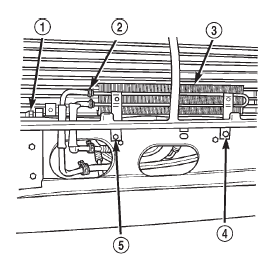
Fig. 22 Auxiliary Air-To-Oil Cooler
2 - HOSE CLAMPS (2)
3 - AUXILIARY AUTOMATIC TRANSMISSION OIL COOLER
4 - MOUNTING BOLT
5 - MOUNTING BOLT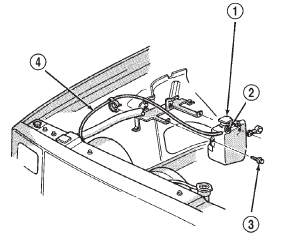
Fig. 23 Reserve/Overflow Tank-Except Right Hand Drive
2 - CLAMP
3 - MOUNTING BOLTS
4 - TUBE TO RADIATOR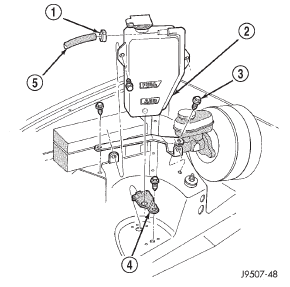
Fig. 24 Reserve/Overflow Tank-With Right Hand Drive
2 - COOLANT RESERVE/OVERFLOW TANK
3 - MOUNTING BOLTS
4 - LOWER BRACKET
5 - TUBE TO RADIATORWater pump
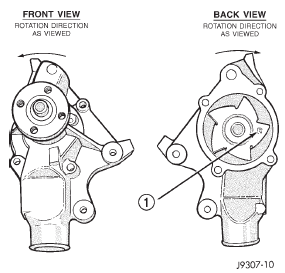
Fig. 25 Reverse Rotating Water Pump-Typical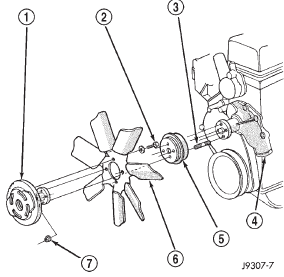
Fig. 26 Fan Mounting Nuts
2 - (4) FAN BLADE-TO-VISCOUS DRIVE BOLTS
3 - (4) FAN HUB-TO-PUMP PULLEY STUDS
4 - WATER PUMP
5 - WATER PUMP PULLEY
6 - FAN BLADE
7 - (4) FAN HUB-TO-PUMP PULLEY NUTS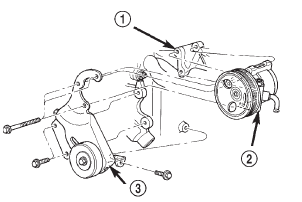
Fig. 27 Power Steering Pump Attachment-2.5L
2 - PUMP ASSEMBLY 2.5L
3 - PUMP BRACKET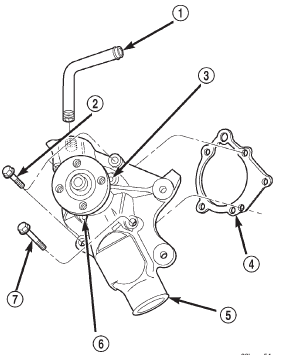
Fig. 28 Water Pump Remove/Install-Typical
2 - UPPER VENT HOLE
3 - PUMP GASKET
4 - WATER PUMP
5 - LOWER VENT HOLE
6 - LONG BOLT
7 - BOLTS (3) SHORT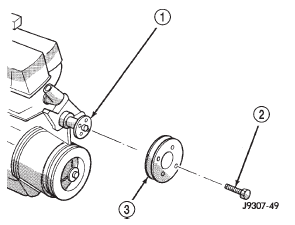
Fig. 29 Water Pump Pulley Bolts
2 - BOLTS (4)
3 - PUMP PULLEY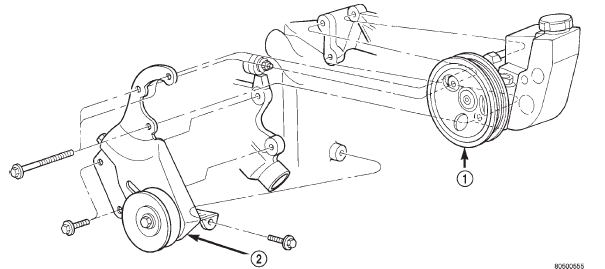
Fig. 30 Power Steering Pump Attachment-4.0L
2 - PUMP BRACKET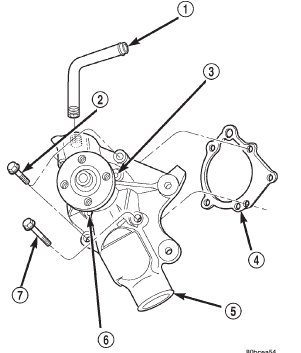
Fig. 31 Water Pump Remove/Install-Typical
2 - UPPER VENT HOLE
3 - PUMP GASKET
4 - WATER PUMP
5 - LOWER VENT HOLE
6 - LONG BOLT
7 - BOLTS (3) SHORT
 Thermostat. Radiator-2.5L. Radiator-4.0L
Thermostat. Radiator-2.5L. Radiator-4.0L
Other materials:
Cleaning and inspection
NV231 TRANSFER CASE
Clean the transfer case parts with a standard
parts cleaning solvent. Remove all traces of sealer
from the cases and retainers with a scraper and 3M
all purpose cleaner. Use compressed air to remove
solvent residue from oil feed passages in the case
halves, retainers, gears ...

